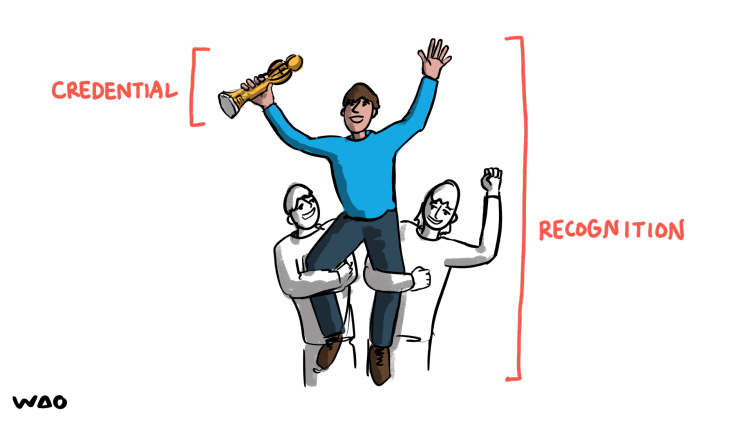“I can’t see the forest for the trees!” Microcredentials and Open Recognition
Note: cross-posted at LinkedIn

Microcredentials are hailed as the great saviour for universities. But Open Badges allow for a lot more. While microcredentials can be a useful way for individuals to demonstrate their expertise in a particular area, just like a single tree in a forest, they shouldn’t stand in isolation.
The problem is that microcredentials can only showcase a narrow set of skills or knowledge, which may not provide a complete picture of an individual’s achievements and potential. The lack of standardisation across different providers also creates confusion and a lack of trust in their value.
In contrast, an Open Recognition approach is like the entire forest, recognising learning and achievement across a wide range of human experience. This approach acknowledges that learning can happen in a variety of ways and contexts, much like a forest is made up of many different types of trees, plants, and animals.
The Open Recognition approach is designed to be more flexible and inclusive, providing recognition the full range of an individual’s skills and knowledge, regardless of their background or financial situation. By providing a consistent and transparent framework for recognition, based on open standards, Open Recognition ensures that recognition is based on a shared understanding of what constitutes valuable learning and achievement.
Just as a forest provides a more complete ecosystem than a single tree, an Open Recognition approach provides a more complete and accurate representation of an individual’s achievements. This recognition of the full range of an individual’s skills and knowledge is particularly useful in today’s rapidly changing job market, but it’s also key to human flourishing.
So, sure, microcredentials can be a useful tool for showcasing expertise in a particular area, but they are limited in scope. An Open Recognition approach, on the other hand, is like a whole forest ecosystem, recognising learning and achievement across a wide range of areas and contexts, and providing a more complete and inclusive way of capturing relationships and achievements.
Next step: join the Keep Badges Weird community!
Photo by Arnaud Mesureur


